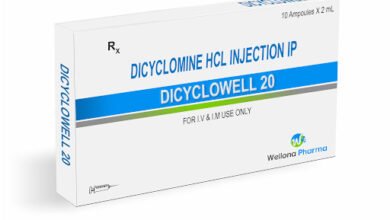Temporomandibular Joint Dysfunction Self-Care | Credihealth

The temporomandibular joint (TMJ) are the 2 joints that connect the lower jaw called mandible of the face to your skull. Additionally, TMJ are the joints that slide, rotate and move front/back of each ear, and also they consist of 2 parts: a mandible (the lower jaw) and the temporal bone which is at the side and the base of the skull. TMJ can suffer from problems called Temporomandibular disorders (TMD). These disorders are majorly of jaw muscles, temporomandibular joints, and can also include the nerves associated with chronic facial pain. Any problem which stops or resists bones, muscles and joints to work together for movement is TMD leading to impairment of TMJ.
TMJ disorders or TMD can be treated easily at home, by following simple self care tips including home remedies, lifestyle changes and exercises etc. Also these tips can be combined with medications after consulting with a doctor to relieve pain and discomfort.
What are the TMJ Symptoms?
The symptoms of temporomandibular joint (TMJ) dysfunction can vary from person to person, but common symptoms may include:
-
Jaw pain or tenderness, especially when chewing or opening the mouth wide.
-
Clicking, popping, or grating sounds in the jaw joint when moving the mouth.
-
Difficulty or discomfort when chewing, talking, or yawning.
-
Jaw muscle stiffness or soreness.
-
Locking of the jaw joint, making it difficult to open or close the mouth fully.
-
Headaches or earaches, often radiating from the jaw.
-
Changes in the way the upper and lower teeth fit together (Malocclusion).
-
Facial swelling or sensitivity.
-
Neck and shoulder pain or stiffness.
-
Dizziness or vertigo.
It is important to note that not all the individuals experience all the TMJ symptoms, it may vary from person to person. If you are experiencing any of the above mentioned symptoms, it is advisable to consult a dentist for a proper diagnosis and treatment.
Also Read: How To Fix Lock Jaw Immediately?
What are the Causes of TMJ?
The major cause of TMD is not known and clear till date. But some factors can contribute to this worsening of condition and increasing pain. These are as follows:
-
Pain might be due to stress and strain over the joints and muscles adjoining the TMJs. These muscles control all the crucial activities and actions like chewing, swallowing food and speaking ability.
-
The other main cause which is thought to be is Bruxism.This is an involuntary habit of grinding,clenching and moving your jaw joints. But the trauma and the stress to the jaw,head and neck might cause more temporomandibular joint disorders.
-
Arthritis and joint displacement can cause TMJ pain.
-
Fibromyalgia and IBD like crohn’s disease etc can worsen and increase the pain more in case of TMD patients.
-
Any type of sensory, genetic, psychological and nervous system factors can increase the risk of developing chronic TMD.
-
Erosion of the disk and change in proper alignment can cause TMJ dysfunction.
-
Arthritis can cause damage to joint cartilage and thus TMJ dysfunction.
-
Any type of Jaw injury can cause TMJ dysfunction.
-
Long-term (chronic) grinding or clenching of teeth
-
Certain connective tissue diseases can cause temporomandibular joint dysfunction.
Also Read: 7 Methods to Dislodge Food Stuck in Esophagus
What are the Temporomandibular Joint Dysfunction Self-Care Tips?
Temporomandibular joint dysfunction can be treated or corrected by following some simple self care tips at home.This can also help to relieve the pain and the discomfort caused by the TMD.
Self care can be done in 3 major ways. These can be :
Let’s start by discussing exercises:
Exercises
Many people who suffer from TMJ may find much relief by strengthening and stretching their jaw which can be done by exercises. But be cautious and don’t continue exercises if they hurt you or cause pain and discomfort.Consult with your doctor before starting these exercises for TMJ. Jawline exercise can help you increase movement of your jaw. These exercise can be done in 3 ways :
-
Stretch exercises
-
Strengthening exercises
-
Relaxation exercises
Here are simple exercises that can help you relieve TMJ dysfunction.
Resisted mouth closure exercise
Put pressure on your chin while trying to close your mouth. To do the exercise:
Step 1: Put your thumb below your chin and index finger in front of the chin.
Step 2: squeeze your chin with both fingers.
Step 3: Gently press down on the chin while closing your mouth.
Jaw movement from side to side
This exercise strengthens the muscles of the jaw. To do this exercise:
Step 1: Take a wooden stick about one-quarter of an inch thick and gently bite down between your front teeth.
Step 2: Move your jaw slowly from one side to the other.
Jaw Movement Exercise
Step1: Put a small object about as thick as a quarter under your front teeth.
Step2: Move your jaw slowly from side to side until your bottom teeth move in front of your upper teeth.
Step3: As you practice more, try using more objects between your teeth.
Tongue Up Jaw Stretch
Step1: Sit or stand and touch the roof of your mouth with your tongue.
Step2: Open your mouth wide without letting your tongue drop from the roof.
Step3: Repeat this exercise several times.
Jaw relaxation exercise
Try this relaxation exercise to relieve the tightness in your jaw:
Step 1: Place the tongue on the top , behind your teeth.
Step 2: Drop your jaw gently and keep your mouth slightly open.
Step 3: Hold for a few seconds until the muscles feel relaxed.
Chin tucks exercise
This exercise will improve your muscle spine alignment.
Step 1: stand straight, make a double chin and push your chest and back a little backward and stretch.
Step 2: Repeat ten times while holding for three seconds.
Goldfish exercise
This exercise helps with alignment of your jaw bone.
Step 1: Put the tip of your tongue against the top of your mouth.
Step 2: Then, Place your index finger in the left TMJ (Joint) and your right index finger on your chin.
Step 3: Put a little pressure on both fingers and slowly drop your chin while keeping your tongue against the roof of your mouth.
Do the same thing for the right TMJ also. Perform this exercise six times in a day, and do it every day.
Home remedies
Let us discuss some home remedies for TMJ to relieve pain and discomfort caused by Temporomandibular joint dysfunction self care.
Hot and cold therapy
Applying heat or cold packs to the affected joint or muscle may provide relief from pain. Cold packs can reduce swelling which might be causing discomfort and locking and will also numb the joint, while heat packs can relax the joint and muscles to increase blood circulation helping to heal.
Massage
Applying gentle pressure to the jaw can relax tight and crampy muscles and joints, thus relieving the pain and increasing the blood flow.
Wear a mouthguard at night
TMD as mentioned above can be caused by involuntarily( without your control) grinding of the teeth at night during sleep. Wearing a simple cheap mouth guard from a sports store or pharmacy can stop grinding and save your teeth as well as your jaw.
Lifestyle and Dietary changes
It is important to keep a check at your lifestyle and see what bad habits might be causing the symptoms of TMJ. Apart from foods which are hard to chew, TMD can also be made worse by chewing gum, sleeping by putting weight on your stomach, stress, other psychological or nervous habits like chewing nails or pencils etc, and even frequent yawning.
-
Change the postures and allow jaw to rest and relax
-
Avoid over using and putting stress over your jaw
-
Stick to a soft diet for TMD. Soft foods like yogurt,pasta,rice, and other cooked vegetables are easy to chew and put less stress on the jaw than the crunchy foods.
-
Avoid eating foods like nuts, potato chips, and raw, uncooked carrots or broccoli.
-
Cut the food into small pieces and then consume.Don’t bite whole food with your front teeth
-
Try to sit straight and maintain a perfect straight posture , this puts less strain on the jaw
-
Make a habit of keeping your spine and muscle alignments better by sitting straight and putting less pressure on your facial muscles and jaw.
-
If you feel high pain in your jaw and it is not tolerable then, you can use pain killers like acetaminophen or other NSAIDs (Non steroidal anti-inflammatory drugs) as ibuprofen, Naproxen etc.Consult your doctor for any other advice related to these medications or treatment of TMJ dysfunction.
-
Get a good sleep which will help you relax the muscles and relieve the tension and the pain caused by TMD.
-
Focus and make habits of practicing activities like meditation or relaxing to reduce stress.This will help to loosen the jaw.You can try doing yoga to calm and relax your face.
-
Change your habits of chewing nails or biting them.
-
Avoid habit of resting your jaw on hand
-
Avoid the habit of clenching or grinding your teeth unnecessarily
-
Keep a check on your daily activities and habits of what you do and what symptoms you observe.
-
Consult with your doctor and tell him about your habits and symptoms clearly.
The bottom line
TMJ are the joints which connect mandible that is your lower jaw with the skull and helps you in performing basic tasks like chewing, swallowing and grinding the food. Due to some involuntary nervous system habits or past history of diseases like arthritis, etc there can be dysfunction of these joints. Thus, the bone, muscle and joints do not work in proper way and can interfere with daily activities. TMJ dysfunction can lasts from few hours to few weeks and it might go on its own in some people.But this is painful and thus there are many self care tips mainly dietary and lifestyle changes, exercises and home remedies which can simply be followed and can relieve the pain and discomfort caused by the TMDs. Consult your doctor before you start any medication or treatment.
Source link
#Temporomandibular #Joint #Dysfunction #SelfCare #Credihealth



